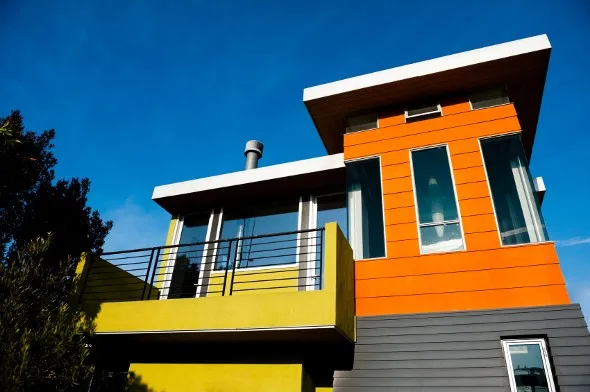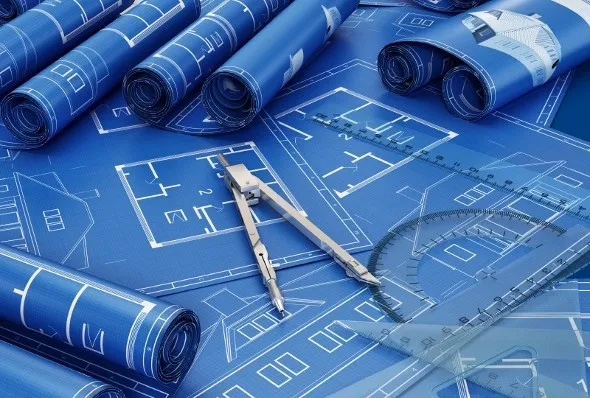If you can’t find a house you want to buy you may be tempted to build your home yourself. In that case, you’ll need to choose between a stick-built house and a prefab home. Stick-built means your home is built the old-fashioned way, with a crew of workers on site for months raising the home and fitting it with plumbing and electricity. A prefab home, on the other hand, comes in pre-built parts.
Do you have questions about how a home purchase fits into your overall financial plan? Speak with a financial advisor today.
What Is a Prefab Home?
The term “prefab” is the abbreviation for prefabricated. These houses are manufactured in a factory setting and transferred immediately as a full build. As you might expect, this type of home is easier to make and move in comparison to a traditional home.
Prefab homes come in three main iterations: manufactured, kit and modular. Here’s a brief breakdown of each:
- Manufactured homes: A home in this category is built in sections and pieced together by professionals and heavy machinery at its final site. These must follow HUD requirements, though.
- Kit homes: These homes are much simpler than a manufactured home, though they follow a similar style of building. In fact, most homebuyers can build a kit home themselves.
- Modular homes: These homes feature much more personalization, companies will often let you customize the floor plan of your purchase. However, unlike manufactured and kit homes, modular homes have an immovable foundation.
The Pros of Prefab Homes
Exceptional Energy Efficiency
One of the benefits of prefab homes is that they tend to be highly energy efficient. Their tight seams and state-of-the-art windows keep heat in and reduce your energy bills in the process. As a bonus, modular homes’ tight construction gives them a reputation for being able to withstand natural disasters. Many people might assume a prefab house is the same as a mobile home. But that’s not true. Prefabricated, or modular, homes go into a foundation like any other home. They can be high-quality, modern houses for those who want a lower carbon footprint than the typical American suburban home.
Fast Construction
Fast construction is one of the big advantages of prefab homes. Because the parts of a prefab home come ready, all you have to do is assemble them and hook up the home to utilities. Hence the name “modular.” The prefab goes up much faster because it arrives partially constructed. That means fewer days with laborers on site and less vulnerability to weather delays and illnesses that can extend the construction process by days and weeks. Still, there’s more to consider than just the construction time. Site preparation, including obtaining permits, can be a lengthy process.
Affordability

Building a prefab home is generally less expensive than building a comparable stick-built home, and part of the savings has to do with labor. It takes fewer laborers working over the course of fewer days to make a prefab move-in ready. That saves you money. Plus, as we mentioned, heating and cooling tend to be more affordable with prefab homes than with regular ones.
If you’re open to buying an existing home, compare the costs of what’s available on the market with the cost of building a prefab. And remember that various levels of fittings and customization can raise or lower the cost of your prefab. you can also talk to the manufacturer about cost-cutting strategies available to you.
The Cons of Prefab Homes
Land Costs
If you plan to build a prefab home, you’ll first need to own the land where it will sit. If you don’t already have a lot, you’ll need to purchase one and confirm that local zoning rules allow prefab construction. You’ll also need access to essential utilities, including electricity, water and sewer, and may have to arrange soil testing to ensure the site can support a foundation.
These steps, along with inspections and permits, can add significant time and cost to the overall project. Some prefab manufacturers offer assistance with this process, helping secure permits and coordinating site preparation, often rolling those expenses into the final price of the home.
More Up-Front Payments
If you buy an existing home you can make a down payment of around 20% and pay off the rest of your mortgage over time. While financing and construction loans are available for many prefab homes, you’ll need to pay for the home’s construction before you move in. Your contract will include a schedule for paying in installments while your home is under construction. This pay-as-you-go feature of prefab homes means you need to be certain you can afford the prefab before you commit to buying it and putting it up. On the other hand, paying more up front saves you money in interest.
Utilities Might Be Tough to Find
One challenge of building a prefab home is managing the utility setup and site preparation. An uneven lot may need to be leveled before construction can begin, and you’ll still need to install a foundation and coordinate connections for sewer, electricity and water, whether that means tapping into city services or locating a viable well source.
If handling these steps feels overwhelming, many prefab manufacturers offer packages that manage the site work and utility arrangements on your behalf, simplifying the process considerably.
tick-Built vs. Prefab: Key Differences at a Glance
If you’re weighing a traditional stick-built home against a prefab alternative, it helps to understand how they differ across cost, timeline and long-term value.
| Category | Stick-Built Home | Prefab Home |
|---|---|---|
| Build Time | Several months to over a year, depending on weather, contractor availability and site complexity. | Significantly faster, often a few weeks for factory construction, with on-site assembly completed in days. |
| Cost | Typically more expensive due to labor, longer timelines and on-site inefficiencies. | Generally more affordable, with lower labor costs and predictable pricing. |
| Customization | Highly customizable; changes can be made throughout the build process. | Customization varies by manufacturer; modular homes offer flexibility, while manufactured/kit homes have more limitations. |
| Long-Term Value | Strong resale value; widely accepted by appraisers and buyers. | Modular homes usually appreciate like stick-built homes; manufactured homes may appreciate more slowly depending on land ownership and local market norms. |
| Financing | Standard mortgages available from most lenders. | Modular homes qualify for traditional financing; manufactured homes may require specialized loans or higher down payments. |
| Durability | Built to local building codes; quality varies by contractor and materials. | Factory-built consistency often leads to tight construction and strong energy efficiency; modular homes can be highly durable. |
Bottom Line

The cost of a prefab home will vary depending on how much you’re willing to do yourself and how much you outsource to others. Some ambitious home purchasers prefer to buy a prefab home as a kit and assemble it themselves, with the help of a few friends. Others are happy to spend the money to have the details of construction and permitting taken out of their hands. Wherever you fall on the spectrum, make sure you understand what you’re getting into before you go the prefab route.
Tips for Buying a Home
- Buying a home is a major financial undertaking. So much so that after it’s completed, you’ll want to work it into your long-term financial plan, which a financial advisor can help with. Finding a qualified financial advisor doesn’t have to be hard. SmartAsset’s free tool matches you with financial advisors who serve your area, and you can interview your advisor matches at no cost to decide which one is right for you. If you’re ready to find an advisor who can help you achieve your financial goals, get started now.
- At closing time, there’ll be many fees you’ll likely incur. Use SmartAsset’s closing costs calculator to learn more.
Photo credit: © iStock/Dragoncello, © iStock/thegoodphoto, © iStock/adventtr
